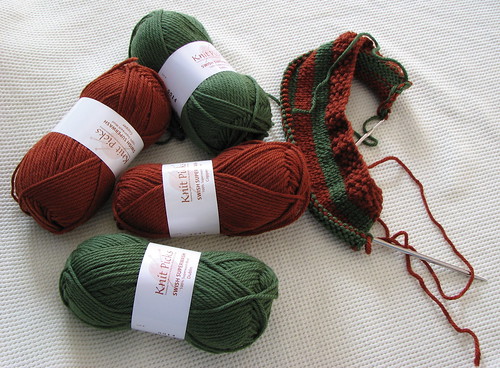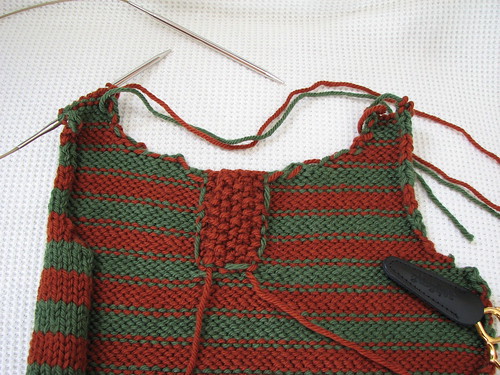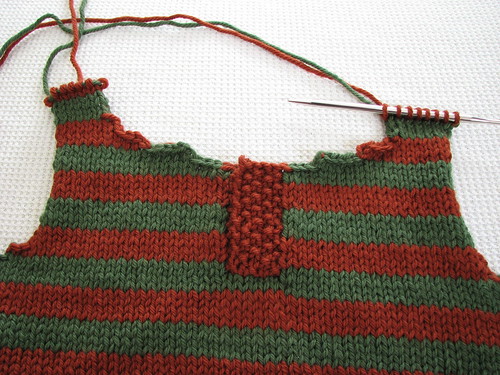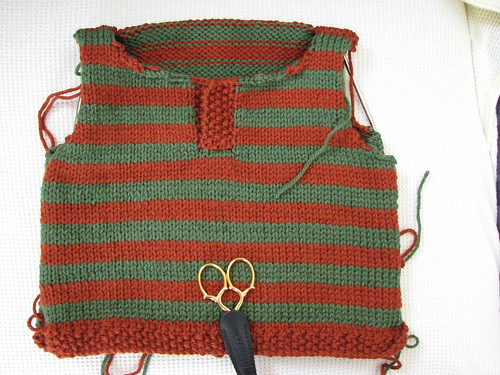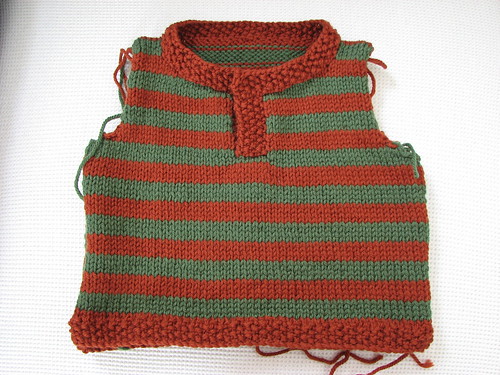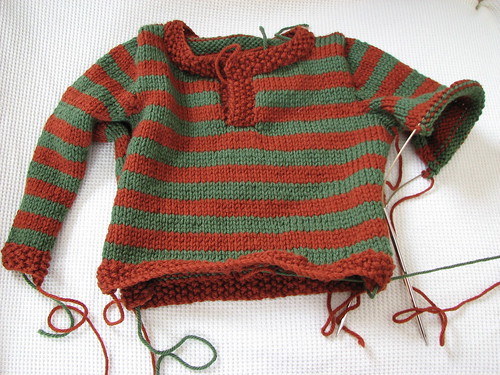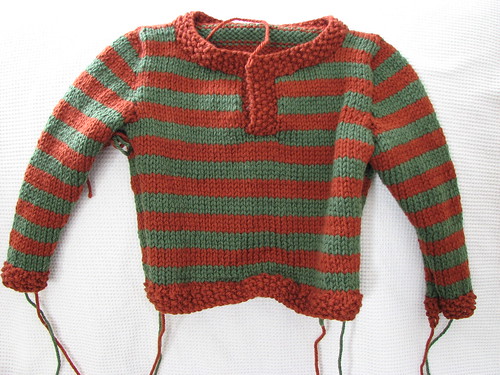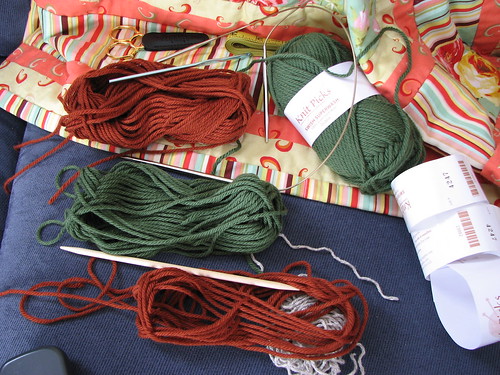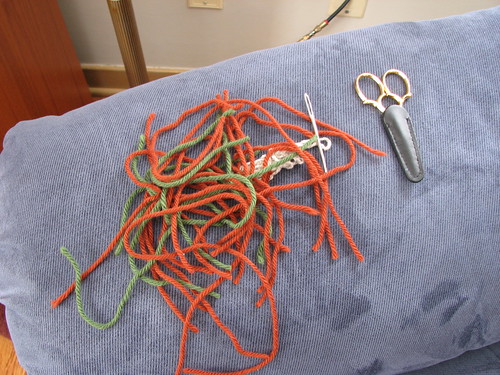The making of a sweater
Mar 3rd, 2007 by Tana
Remember this from the other day? I had just gotten the yarn and had barely begun.
Here it is once I finished the front. This is the back where you can see how I carried the yarn with the intarsia and binding off while doing stripes.
And the front – same stage as the above picture. Doesn’t it look nice.
Here it is with the shoulders seamed together.
Now the collar is done. Isn’t it fun to watch this little sweater take shape?
The first sleeve is finished, and the second sleeve is well on its way.
Finally, we’re ready for seaming.
Here is how much yarn I had leftover. Not much…but I didn’t run out like I feared.
Here are all the ends from the tails I buried.
And this is the finished project. Pretty, eh?
…with one small problem.
The dimensions I knit were 23 inches wide. After blocking, the sweater was 26 inches wide when wet, 25 inches wide when dried. When it was 26 inches wide, it was also an inch longer (both the body and the sleeves). Now that it shrunk back down to 25 inches, it is closer to the original measurements for length.
And I’m rather peeved with it. Yes, this is one of the issues with knitting. They talk about swatches. You’re supposed to knit a plain square, wash it, put it in your pocket for a couple days and see how it wears. Kind of like checking to see if you have all the ingredients before you start making cookies.
I’ve swatched before. Followed the letter of the law. And try as I might to do everything I plan to do the same way as I will in the real garment, the measurments of my swatches have not once correlated to the measurments of the finished object. So I’ve thrown up my hands in exasperation.
I find gauge swatches useful when I’m designing and I want to see how a certain stitch pattern will really look or I want to test my bind off and decide if I want to bind off as I go or do it all at the end. But for purposes such as this, the most extensive gauge swatch probably wouldn’t have prevented the calamity. When you wash a full garment, the sleeves pull on the body and cause things to happen which don’t occur with a plain square. The widening is more pronounced at the bottom hem than up top as well as more in the back (one piece) than in the front (where you have the divide for the neck).
I had thought it would be worn over a turtleneck onsie rather than alone, and with the resulting dimensions, I think there will be no choice but to wear it that way. It should be fine as an oversized pullover jacket. But I’m disgusted none-the-less.
According to what I’ve heard, wool typically lengthens, and cotton widens. This is superwash wool, which should lengthen (something I would have been perfectly happy with had it occurred) rather than widen.
And the debate as to how much ease little baby sweaters need is still out with the jury. Four inches of ease for an adult sweater is the norm, and this little sweater at 23″ had four inches of ease for the “typical” 12 month old child. I’m thinking, though, that the belly is bigger than the chest, and that is why every baby garment I’ve measured has those four inches of ease.
I have yarn to make one more little sweater for another baby. It’s the Deep Ocean color of Knit Picks Swish Superwash yarn. I think I shall use smaller needles (US 6 instead of US 7) and knit an extra inch longer than I would have otherwise. The second sweater will be targeted as 18 month size, but I will probably use about the same number of sts. It will be a completely different design, and I have until the end of the month to finish it according to my self-appointed goal. Be my luck it won’t widen and I’ll be stuck with something that’s a bit narrow. There are ranges in what fits well – it isn’t an exact science – so just as with this sweater, I’m sure it will still be wearable. It just might not be what I intended.
Oh, the trials and tribulations of a knitter!
